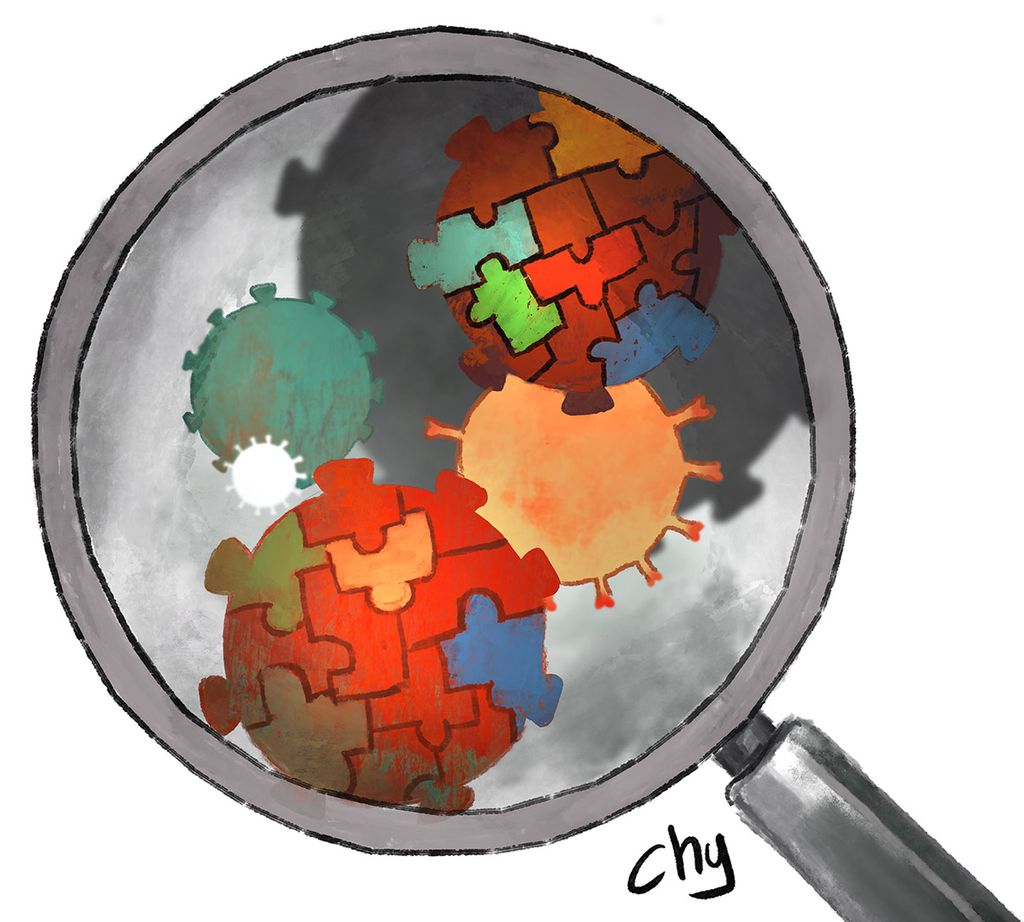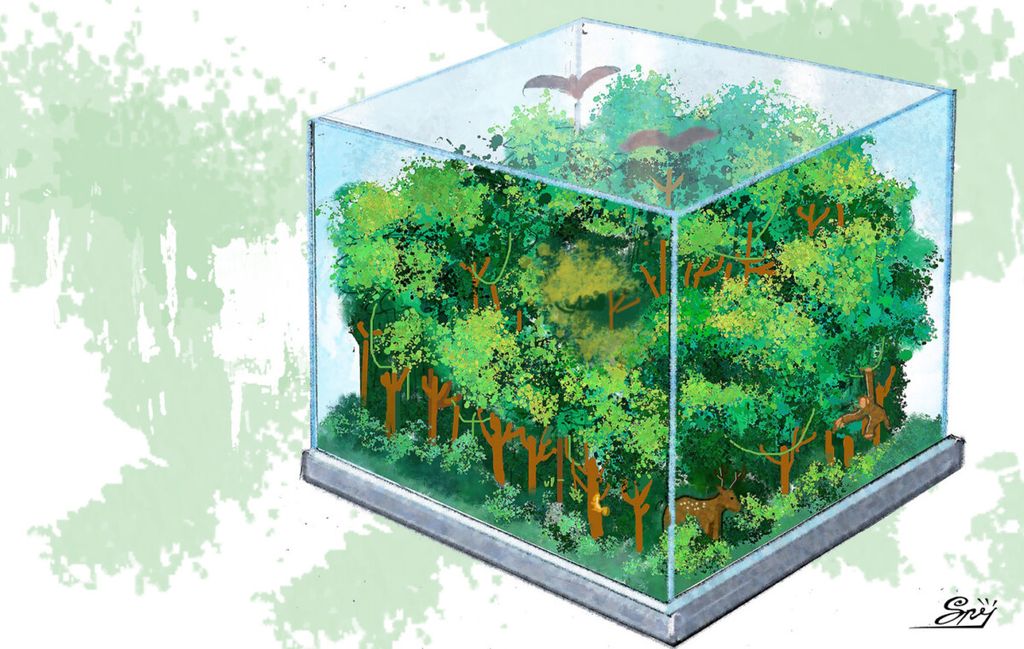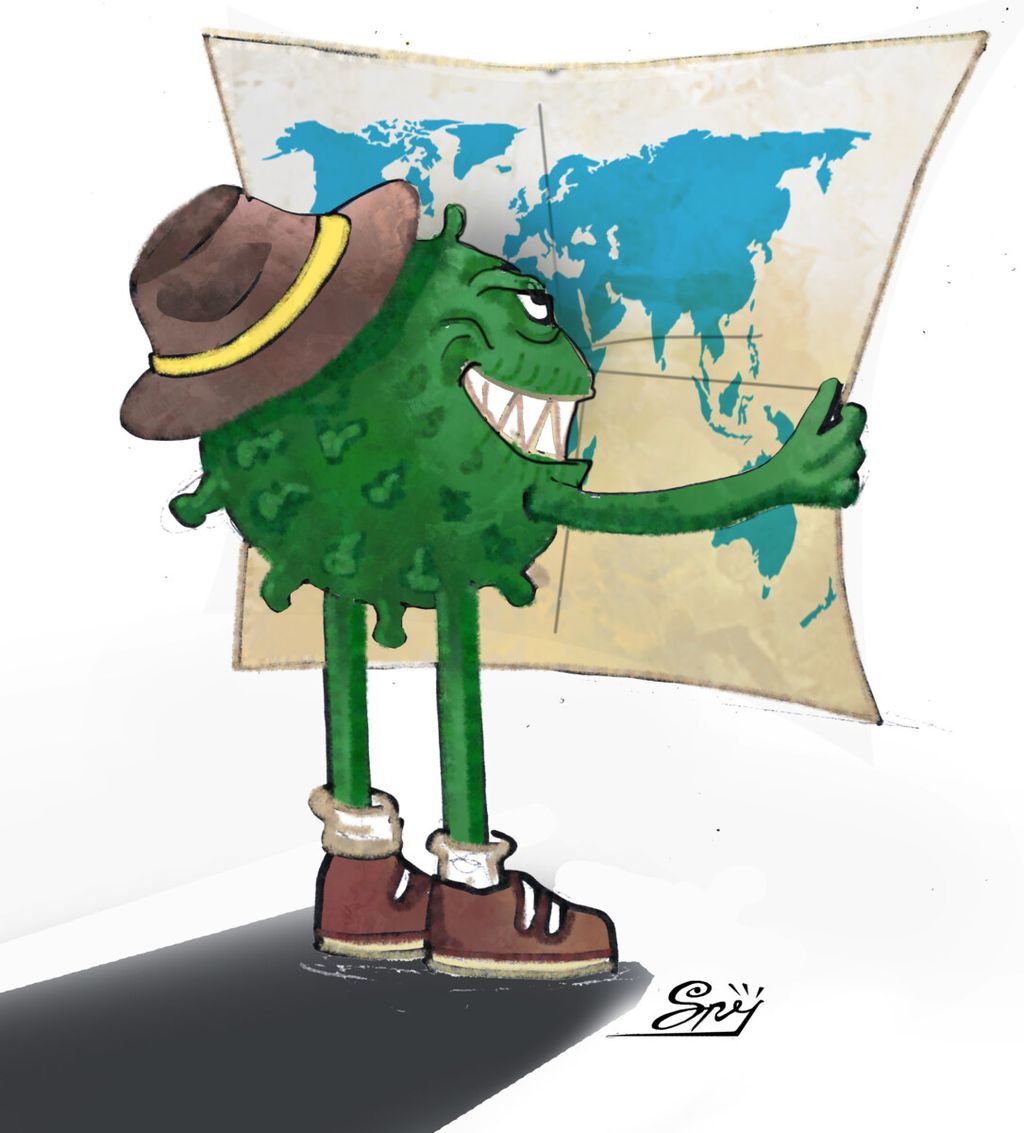Restoring the Earth’s Health, Post-Pandemic
The global pain we are suffering as a result of the Covid-19 pandemic should be a loud and clear warning, so that we put the brakes on greed and accelerate sharing in resource use.

Didie SW
Indications that the Covid-19 pandemic is becoming an endemic are increasingly apparent. The second wave has faded, the number of new daily cases is below 1,000 and the death toll is below 50.
This is far below the peak of the pandemic three months ago, when we saw 56,000 new cases and 2,000 deaths per day. Vaccination has also proven to reduce fatalities. The rate of new cases and deaths after vaccination was much lower compared to before the rollout. The situation is also improving in most other countries, although not yet fully under control. And more thankfully, there hasn't been a new variant as dangerous as the Delta variant.
The pandemic has shattered the life order of the whole world. Economies plummeted, thousands of companies went bankrupt, unemployment swelled, poor and stressed people were everywhere and many development agendas were abandoned. Schools and colleges were forced to close for more than a year.
Many got headaches from attending daily online meetings, from lectures, various seminars and discussions, and to meetings, as well as from tahlilan (prayer for the dead) to takziah (paying last respect for the dead).
Also read:
> Setting Pandemic Road Map Priorities
> ‘Blessed’ Homecoming and Indian Setback
Now, when the pressure of Covid-19 is subsiding, it is time for us to reflect and understand the pandemic as “a natural phenomenon at the macrocosmic level”. The coronavirus that emerged in Wuhan has evolved and mutated into many new variants and spread to all parts of the world. This is a natural process as in Darwin's law of evolution, that every living thing strives to continue to exist, competing and fighting to leave behind only those organisms that are strong, can survive and are able to adapt. It is survival of the fittest.
After spreading and infecting millions of people in more than 200 countries, SARS-CoV-2 has faced resistance from the immune systems of infected humans. Faced with this human resistance, the coronavirus continues to try and survive by mutating, changing its genetic structure to adapt to the new environment and emerge even more dangerous than before. This explains the emergence of the Delta variant, which is much more lethal than the original variant.
On the other hand, beyond this “natural” process is the human mind, constantly looking for ways to deal with the increasingly severe coronavirus outbreak. Mass vaccination can prevent outbreaks of the coronavirus. However, the virus will also continue to try to update its genetic structure so that one day, it can penetrate the immunity of vaccinated people. So what is happening is a long battle between the coronavirus and humans. Nobody knows when it will end.
Listening to the Earth’s “protest”
Experts predict that this battle will not end, but only reach a kind of truce in the future. In the end, the coronavirus will continue to exist but weakened, so it becomes similar to the common cold virus. This is when it becomes endemic, as we have seen the indications.
This pandemic was not caused by a new microorganism. This virus family existed before the pandemic. The viruses of the coronavirus family include SARS-CoV, MERS-CoV, and now SARS-CoV-2. As for viruses of the avian influenza-1 (H5N1) group, they have caused bird flu, Hong Kong flu, swine flu and horse flu, depending on the type of animal that was infected. A century ago there was even the Spanish flu pandemic caused by avian influenza-1 subtype H1N1. So the mother of this virus is believed to have been around for centuries.

Then why did it cause a sweeping pandemic? Some experts say this is the earth's response to maintain the natural balance, which had been disrupted. Since the industrial revolution two centuries ago, humans have continued to exploit natural resources on a massive scale and disrupt ecosystems.
People's lands were confiscated (by big corporations) with state sponsorship, their forests were cut down, their trees taken and burned, soil layers were removed, and minerals were dredged, and then the land was abandoned, leaving behind conflicts with the local communities that had managed and protected the forests for hundreds of years. Greenhouse gases (GHG) are increasing, the Earth's temperature is rising, the polar ice is melting, the planet is growing hotter.
As a result, Earth is no longer a planet of harmony, but one that is hot and full of conflicts. It is not only humans that are in conflict with each other, but also between species: between humans and animals, plants and small invisible creatures, or microorganisms, whose habitats and ecosystems have been disrupted.
So the emergence of the Covid-19 pandemic is related to Earth’s natural processes of and all creatures living on it. Earth staged a "protest" because its natural balance has been damaged by human greed, especially by the ruling economic and political elites in many countries.
Cause of energy needs
China is now experiencing an energy crisis that could trigger a global crisis. As the largest energy-consuming country in the world, China requires an enormous amount of fuel to sustain industrial machinery and meet the consumption demand of its people, who number close to 1.5 billion. China is the largest energy exporter, the largest energy consumer, and the largest GHG emitter in the world.
To protect its energy reserves, China has limited its domestic coal production in recent years but has boosted imports, including from Indonesia. As a result, the price of coal, which hovered at around US$60-70 per metric ton (MT) a few years earlier, has now skyrocketed.
Also read:
> Consistency in Fighting Covid-19
In October the contract price of coal on the ICE NewCastle market reached $230 per MT. Prices on the European market are even crazier. The CIF price for Amsterdam-Rotterdam-Antwerp (ARA) broke through to $301 per MT.
However, the energy crisis has also suddenly enriched those working in the coal sector, from contractors, traders, transporters, surveyors, banks, mediators and to, of course, owners of coal mines. And what we are worried about is that the damage at former mining sites that has so far required minimal rehabilitation will continue to persist, even though the coal trade system charges fees for reclamation and rehabilitation costs.

Supriyanto
This year's tragedy has become even more complete. Nature is being increasingly exploited without adequate improvements while the perpetrators are getting richer. Meanwhile, billions of people in the world are growing poorer as an impact of the pandemic that has not yet subsided, and they must also bear the environmental impacts of overexploitation.
In its long life, Earth is undergoing a process of complete destabilization because the natural balance has been disrupted. In addition to natural causes, destabilization has also been caused by human activity, such as hugs wars that result in large numbers of human deaths and the destruction of civilizations.
Apart from that is a destabilization process that occurs naturally and gradually, but the accumulated damage is massive. Natural forests that were previously full of biodiversity have been cleared and replaced with monocultures of industrial plants, such as oil palm plantations (to improve the flavor of human food). As a result, thousands of germplasms have been lost and the animals that live in these areas are becoming more and more desperate.
Also read:
> Research to Focus on Biodiversity with Added Value
> Predicting the Future of COVID-19
> Mutual Discipline to Prevent Worst-Case Scenario
Even indigenous communities that have lived in harmony for hundreds of years by protecting their customary lands and forests are now marginalized and trapped in structural poverty. The same is true in the exploitation of coal, gold and copper. These various forms of excessive exploitation of nature cause environmental damage and enrich the few entrepreneurs and officials involved the, but local people are marginalized and grow poorer.
In this context, some people position the Covid-19 pandemic as a wakeup call for humankind; that the greedy exploitation of nature by removing human values has gone too far. If nature and everything in it, including grassroots people, are no longer able to deal with the greed of the world's elite, perhaps this is God's way of issuing a warning.
“One planet, one health”
In order to produce a better generation, the government must draft regulations and take real actions to prevent the continued destruction of nature in a kind of "mental revolution" to care for Earth. These regulations should support green and renewable energy and gradually reduce the use of fossil energy sources. If this does not start immediately, all forms of excessive exploitation of nature will result in the extinction of species.
In the short term, what must be prepared is a policy paradigm on “one health”, or universal health. This “one health” approach must be collaborative, multisectoral and transdisciplinary with regard to humans, animals, microorganisms and the environment. This system must be formed in stages from the local, regional, national and to the global levels. The goal is for Earth to reach optimal health.
The “one health” paradigm focuses on using resources while simultaneously preserving the environment and public health. This “one health” approach has many roles in overcoming problems of food security, animal food sources, livestock systems, and environmental sanitation during a pandemic.

Amid the Covid-19 pandemic, the one health approach holistically interconnects animals, humans, pathogens and the environment. The fact is that we are now living in the Anthropocene era, when all human activity has a significant impact in changing global ecosystems. For example, the human dietary habit of eating animals that cause disease, such as bats, rats, civets, and raw fish, should be avoided. The pandemic started with an animal-to-human (zoonotic) mutation.
In 2015, Microsoft founder Bill Gates predicted that a pandemic was coming, although he did not specifically mention Covid-19. Gates recently predicted that the next global health problem would be climate change and biological weapons.
In addition to the current zoonotic phenomenon, climate change is predicted to become a major health problem in the next few years. Look at how the temperature of Earth’s air is increasing so that the polar ice caps have begun to melt. The greenhouse effect brings heat back to Earth due to the chlorofluorocarbon (cfc) gases released from emissions. It is conditions like these that the one health paradigm must immediately improve to promote long-term resilience in all systems within our shared planetary environment.
Planetary health education
Universities, as both institutions and academia, have great influence in guiding public perspectives, so they are called agents of change. Therefore, universities need to speak loudly about the agenda for rehabilitating Earth. This spirit can be used in all academic disciplines at all education levels. It is not just creating smart and skilled human resources to compete for jobs and in business sector that are separating them from their noble character.
How do we do this? The Lancet published the idea of "a framework to guide planetary health education". Essentially, this means arming students with transdisciplinary insights and knowledge with an aim to instill concern for and commitment to the efforts to restore the Earth’s planetary health. When these students later become leaders, it is hoped that their policies will focus on sustainable development.
This proposal introduces a “planetary health education framework” that crosses disciplines and illustrates the broad spectrum of planetary health education. Among these are to promote praxis, participatory teaching methods and unique learning pathways that respond responsibly to environmental and social dynamics, local priorities, technologies, and available resources in each learning setting. The framework facilitates the creation of a diverse spectrum of educational programs and learning resources on planetary health, and is relevant to students at all levels.
Overall, this planetary health education framework considers five basic dimensions that cover the essence of planetary health knowledge, values and practices. The five domains are natural interactions, systems of thought and complexity, equality and justice, anthropocentrism and health, as well as movements to build and change systems towards balanced welfare.
If universities continuously implement this planetary health education framework, their alumni who become leaders in various sectors will be able to create policies that support the Sustainable Development Goals (SDGs) in order to restore the health of planet Earth, which is now deteriorating.

Djoko Santoso
Complicated? Indeed, because changing paradigms and revolutionizing mindsets is not easy. However, the global pain we are suffering as a result of the Covid-19 pandemic should be a loud and clear warning, so that we put the brakes on greed and accelerate sharing in resource use. It is for the sake of this planet, the only habitable one in this universe so far.
Djoko Santoso, Professor, Airlangga University medical school; chairman, Indonesia Ulema Council (MUI) East Java health board
This article was translated by Kurniawan Siswoko